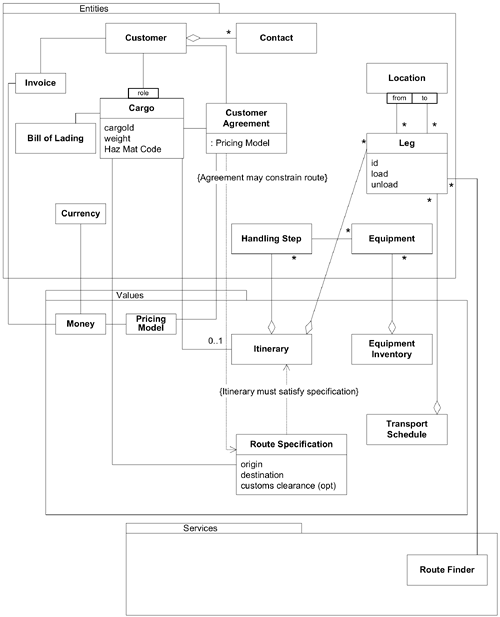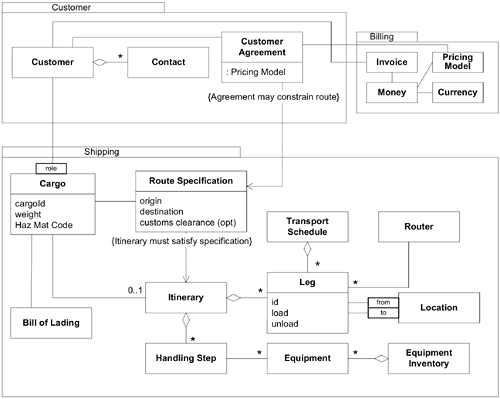Domain-Driven Design - Parts I, II
Javier Eduardo Rojas Romero
April, 2020
Part I
Ubiquitous Language
Ubiquitous Language
The set of names, actions, and relationships used to model a system:
- Spoken by everybody
- Used everywhere
One Team, One Language
Technical people often feel the need to “shield” the business experts from the domain model…
§
If sophisticated domain experts don’t understand the model, there is something wrong with the model.
Modeling Out Loud
“If we give the Routing Service an origin, destination, and arrival time, it can look up the stops the cargo will have to make and, well … stick them in the database.”
§
“The origin, destination, and so on … it all feeds into the Routing Service, and we get back an Itinerary that has everything we need in it.”
§
“A Routing Service finds an Itinerary that satisfies a Route Specification.”
Executable Bedrock
Well written code can be communicative, but the message it communicates is not guaranteed to be accurate.
It takes fastidiousness to write code that doesn’t just do the right thing but also says the right thing.
Binding Model and Implementation
The model must guide the implementation
Don’t separate analysis/design and implementation
- Crucial discoveries always emerge during the design/implementation effort
- Very specific, unanticipated problems always arise
Initial analyses
- Go into depth about some irrelevant subjects
- Overlooks some important subjects
- Subjects might be represented in ways that are not useful to the application.
Usual results
Results are abandoned soon after coding starts, and most of the ground has to be covered again
Design-while-implementing usually is rushed
Access to domain experts is difficult after implementation starts
Model-Driven Design
The design must:
- Reflect the domain model in a very literal way
- Must be naturally implemented in software
Revisit/refactor/rethink until you get both
Additional remarks
- DDD is Object Oriented (expressive, mature)
- Aim is not to simplify concepts (let bones show)
- Software construction is all about design
- The model is meant to be refactored
Part II
Layered Architecture

User Interface
Shows information to the user
Interprets user commands

Application Layer
Provides functionalities via domain objects
Thin, coordinates
This is what “User Stories” are all about

Domain Layer
It’s the place for the business concepts, information, rules, etc.

Infrastructure Layer
Provides generic technical capabilities that support the higher layers.

Modeling Materials
Base Elements
Entities
Value Objects
Associations
Life Cycle
Aggregates
Factories
Repositories
Complexity Handling
Services
Modules
Base Elements
Entities
Defined by their identity, not their attributes
Match objects with different attribute values but same identity
Are different from objects with the same attributes but different identity
Value Objects
Objects that describe things (what, not who)
Only their values are relevant.
Immutable*. They enable optimizations.
Associations
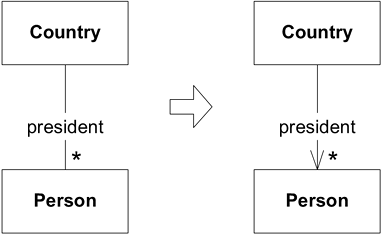
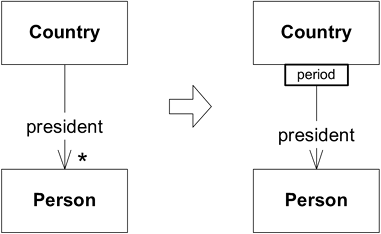
Life Cycle
Aggregates
Boundaries between groups of one or more Entities/Value Objects
Aggregates
They have a root Entity/Value Object, and specify global/local scope for identities
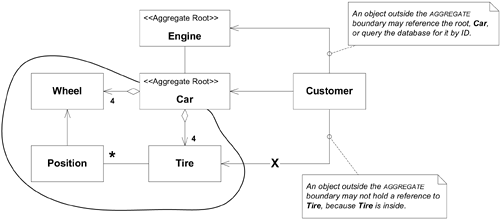
Aggregates
Define scope of invariants/constraints, and transactionality (atomic/eventual consistency)
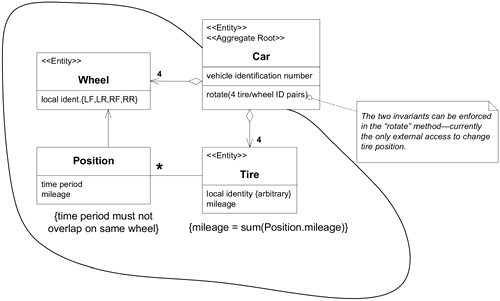
Factories
Complex object creation belongs to the Domain layer
But usually doesn’t belong into any specific Entity/Value Object/ Aggregate
Enter Factories
Repositories
They provide the “illusion of an in-memory collection of all objects”
Provide access to root objects not easily reachable via Associations
Abstract the specific storage technology used
Complexity Handling
Services
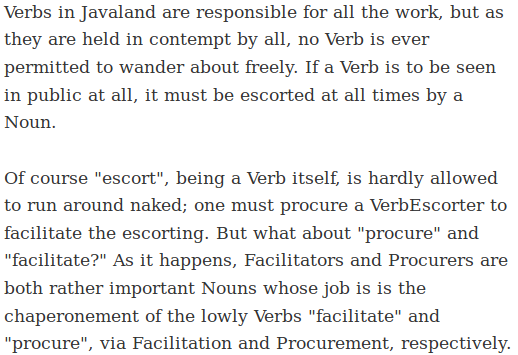

Services
Don’t tuck everything into services. Not-so-fat-models are OK.
Modules
It is a truism that there should be low coupling between Modules and high cohesion between them.

Modules - Low Coupling
There is a limit to how many things a person can think about at once (hence low coupling)
Modules - High Cohesion
Incoherent fragments of ideas are as hard to understand as an undifferentiated soup of ideas (hence high cohesion)
Modules
Complexity: intellectual unmanageability
Yet, it isn’t just code being divided into Modules, but concepts
An Extended Example




